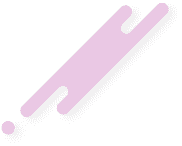The Not-So-Secret Secrets of Effective Content Monitoring
It's no secret that when you've got your fingers in the digital pie, you need to keep a close eye on your ingredients - in this case, your content. Content monitoring, for those not yet in the know, is the bread and butter of assessing your online content's performance. It's all about analysing the impact and usefulness of what you put out there. Here's what you need to know about the nitty-gritty of it:
The Importance and Benefits of Content Monitoring: You can't measure the success of your recipes without a good baking scale - in the same way, you can't pinpoint the success of your content without effective monitoring. It allows you to track how your content performs over time, how your intended audience interacts with it, and how well it meets your business objectives.
The Key Metrics to Monitor: A bit like baking a perfect Victoria sponge, we need a handful of ingredients including shares, comments, likes, clicks, bounce rates, time-on-page, number of new visitors and the rate at which they convert. We can throw all these ingredients together to get a comprehensive idea of how well a piece of content is performing.
The Secret Sauce - Google Analytics: When it comes to getting granular with your content performance, Google Analytics is your go-to icing on the cake. This powerful tool lets you dive into the details, identifying which content is getting the most attention and driving user engagement.
The Step-by-Step Guide to Start Content Monitoring: If you're new to the kitchen... I mean, content monitoring, don't fret. Starting is as simple as setting up measurable goals, identifying your audience, regularly checking your metrics, adjusting your methods based on results, and refining the process over time.
Alright then, those are the basics. Let me put on my web designer hat on now and share my two cents on this...
As a Liverpool-based web designer, let me tell you something mate - the debate over whether a content-first or a design-first approach is superior has been going on for years. But what we often miss in these discussions is the fact that neither can achieve its full potential without consistent monitoring and adjustment.
You see, ultimately, the goal of your web design should be to support and enhance the content. There's no point in creating a visually stunning site if no one can find it, or if the users find the content irrelevant or tedious. That's why you need to monitor how users are interacting with your content and design, and make adjustments accordingly in real time.
Content monitoring gives us the ability to see firsthand how our audience interacts with our output. When complimented by design elements, the monitored content drives the design by indicating what works best for your users. When you utilize this in a website design, it creates a synergetic relationship between your design and your content, both working together for the benefit of your user experience.
So remember: content monitoring isn't just a cool tool for data junkies. It's a practical and necessary approach for anyone aiming to create an engaging, effective website. If you're not doing it already, it's high time you got your hands on that mixing bowl and got stuck in! Cook up a storm with your content, and never stop refining your recipe. Because in the world of web design, it's all about constant evolution and innovation, and content monitoring is your ticket to baking a user experience to savour!


